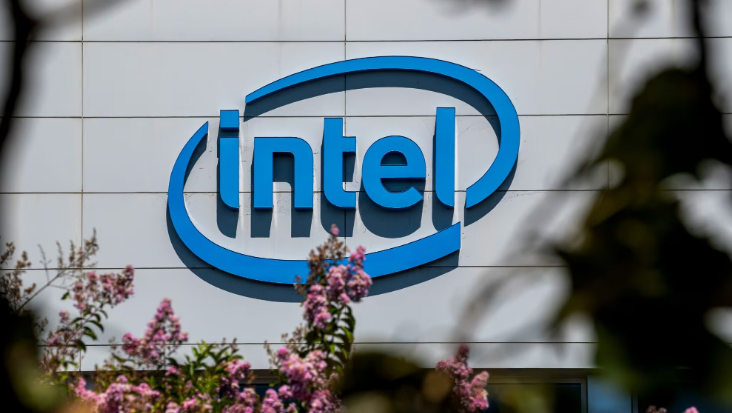Introduction to the Role of Technology in Business
In today’s fast-paced world, technology isn’t just an accessory for businesses—it’s a lifeline. Companies are constantly evolving and adapting to stay ahead of the competition. At the heart of this transformation is Intel, a name synonymous with innovation in computing technology. As organizations strive for efficiency and effectiveness, they increasingly find themselves making calls on Intel to power their operations.
From enhancing data processing capabilities to leveraging artificial intelligence, the integration of advanced technologies reshapes how businesses operate. It’s not just about having cutting-edge hardware; it’s about understanding how these advancements can drive success. Whether you’re a startup looking to scale or an established company aiming to innovate, harnessing what Intel offers could be your ticket to unlocking new potential.
Let’s dive deeper into the fascinating intersection where technology meets business operations and explore why making calls on Intel is crucial for staying relevant in today’s marketplace.
The Importance of Intel in Business Operations
Intel plays a pivotal role in the modern business landscape. Its processors power devices that drive productivity and innovation across industries.
Businesses rely on Intel technology for faster data processing, enabling them to make informed decisions swiftly. This speed enhances operational efficiency, allowing teams to focus on strategic initiatives rather than getting bogged down by sluggish systems.
Moreover, Intel’s advancements in artificial intelligence and machine learning open new avenues for automation. By integrating these technologies into their operations, companies can streamline workflows and reduce human error.
Security is another critical aspect where Intel shines. With built-in security features, businesses can safeguard sensitive information from cyber threats while maintaining compliance with regulations.
Incorporating Intel solutions isn’t just about keeping up; it’s about staying ahead of the competition. Companies that embrace this technology position themselves as leaders ready to tackle future challenges head-on.
Advancements in Technology and its Impact on Intel
The technology landscape is evolving at a breathtaking pace, reshaping how businesses operate. At the core of this transformation lies Intel, continuously pushing boundaries with its innovations.
Recent advancements in artificial intelligence and machine learning have significantly enhanced Intel’s capabilities. This has enabled companies to process vast amounts of data quickly and efficiently, leading to informed decision-making.
Moreover, the rise of edge computing is changing how businesses interact with their systems. With Intel’s powerful processors, organizations can analyze data closer to where it’s generated. This reduces latency and improves response times dramatically.
Furthermore, cloud technologies have seen major improvements thanks to Intel’s contributions. Businesses are now able to scale operations seamlessly while maintaining robust performance levels.
This interconnectedness allows for better collaboration across departments and streamlines workflows like never before. The impact on productivity cannot be overstated; organizations are realizing benefits that were once considered dreams.
How Businesses Can Utilize Intel to Improve Operations
Businesses can tap into Intel’s cutting-edge technology to enhance their operations significantly. Leveraging Intel processors allows for faster data processing, which is crucial in today’s fast-paced environment.
Cloud computing solutions powered by Intel help organizations scale effortlessly. This flexibility means businesses can adapt quickly to changing demands without overcommitting resources.
Moreover, integrating artificial intelligence capabilities from Intel leads to smarter decision-making. Automated analytics tools can provide insights that were once time-consuming and labor-intensive.
In the manufacturing sector, IoT devices utilizing Intel chips enable real-time monitoring of equipment performance. This proactive approach minimizes downtime and optimizes productivity.
Additionally, cybersecurity measures backed by Intel protect sensitive information effectively. Businesses gain peace of mind knowing their data is secure while focusing on growth and innovation.
Case Studies of Successful Integration of Technology and Intel in Business
One compelling example is a large retail chain that integrated Intel’s technology into its inventory management system. By utilizing Intel-powered devices, the retailer enhanced real-time data tracking. This allowed for quicker restocking and minimized wastage.
Another case involves a financial services firm that adopted Intel’s AI-driven analytics tools. Their customer service improved dramatically with faster response times to client inquiries, leading to higher satisfaction ratings.
In the manufacturing sector, a company deployed Intel-based IoT solutions across their assembly lines. This resulted in predictive maintenance capabilities, reducing downtime significantly and boosting overall productivity.
These instances highlight how integrating calls on intel can lead businesses to achieve remarkable operational efficiency and innovation. Each success story serves as an inspiration for those looking to harness technology effectively within their operations.
Potential Challenges and Solutions for Implementing Technology and Intel in Business
Implementing technology and calls on Intel can present several challenges. One major hurdle is resistance to change within an organization. Employees may feel overwhelmed or skeptical about new systems.
Training is essential here. Providing comprehensive training sessions helps ease the transition, boosting confidence among staff members.
Another challenge lies in data security. As businesses increasingly rely on technology, safeguarding sensitive information becomes paramount. Investing in robust cybersecurity measures will address this risk effectively.
Additionally, integrating existing systems with new technologies can be daunting. Businesses should conduct thorough assessments of their current infrastructure before making any significant changes.
Budget constraints often limit progress. To overcome this obstacle, companies can explore phased implementation strategies that allow for gradual investment while still advancing technologically over time.
Conclusion
The synergy between technology and calls on Intel is reshaping the landscape of modern business. As organizations increasingly rely on advanced solutions, the role of Intel becomes more pronounced. The power of data processing, cloud computing, and AI capabilities fueled by Intel chips enhances efficiency and drives productivity.
Businesses that embrace these innovations often find themselves ahead of the curve. Utilizing Intel effectively can lead to streamlined operations, improved decision-making, and a better customer experience. It’s clear that leveraging this technology is not just an option—it’s essential for staying competitive in today’s market.
However, businesses must also navigate potential challenges when implementing new technologies. Addressing concerns such as integration difficulties or training needs will ensure a smoother transition into tech-driven strategies.
Embracing technology with a focus on calls on Intel empowers businesses to thrive in an ever-evolving digital environment. Organizations willing to adapt and innovate stand poised to reap significant rewards in efficiency and growth for years to come.


